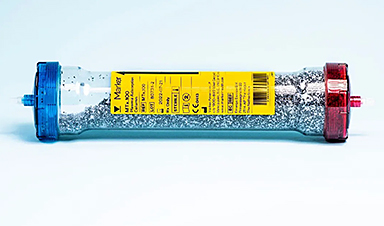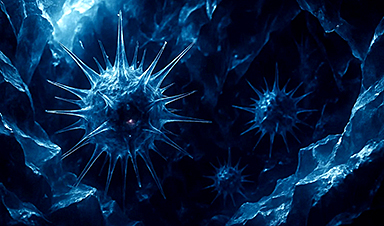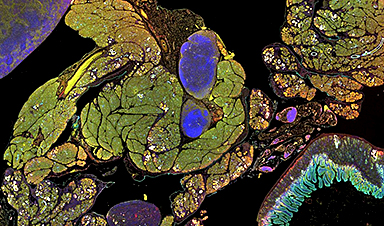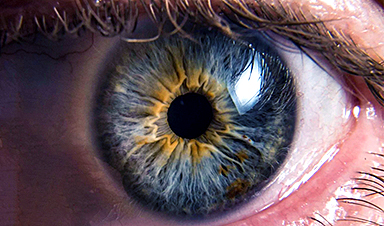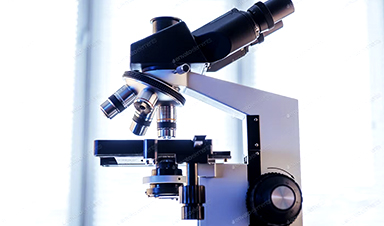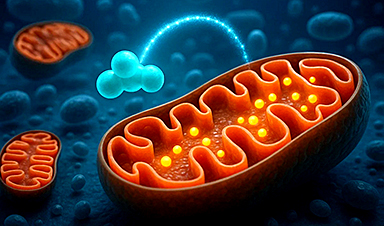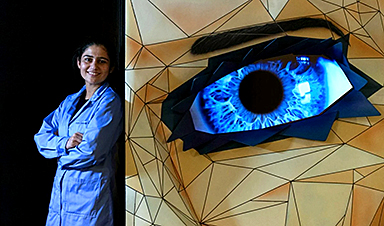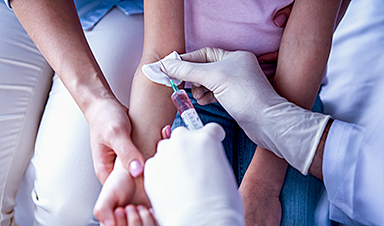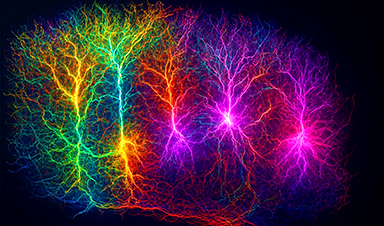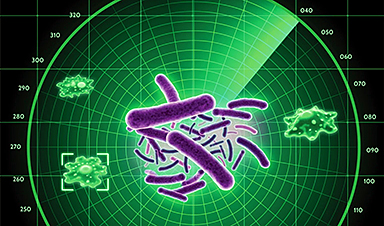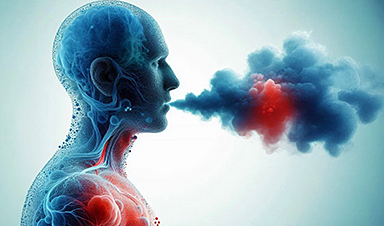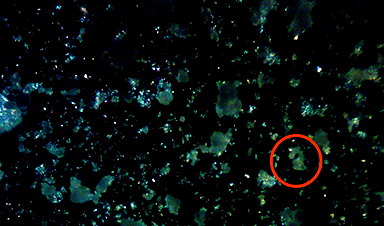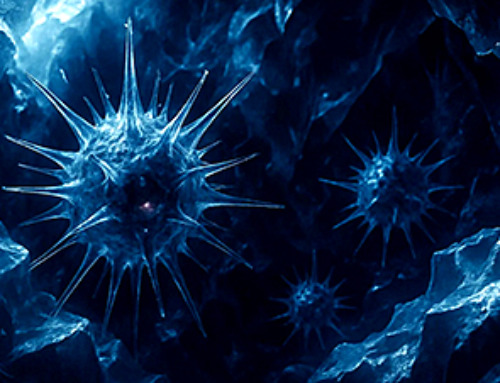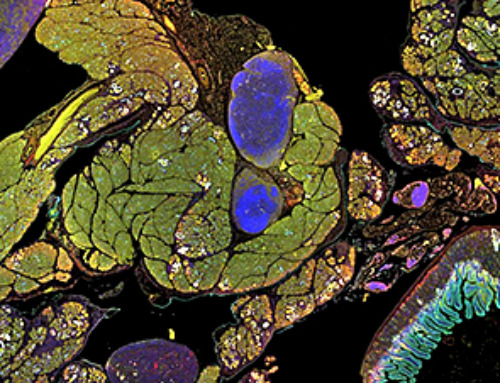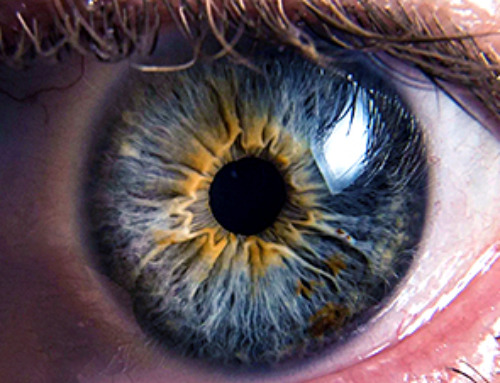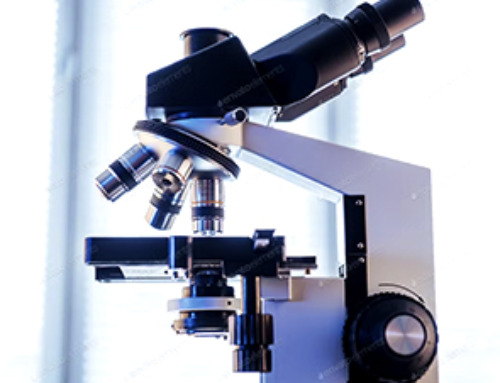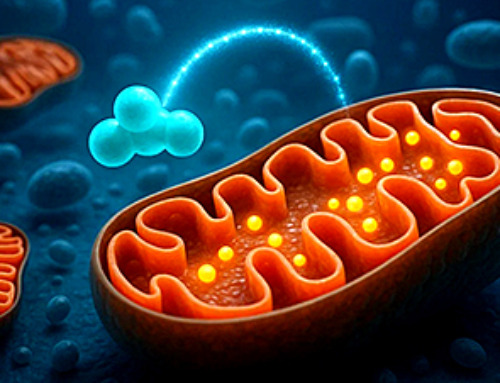This is a non-exhaustive list of places microplastics have been found: Mount Everest, the Mariana Trench, Antarctic snow, clouds, plankton, turtles, whales, cattle, birds, tap water, beer, salt, human placentas, semen, breast milk, feces, testicles, livers, brains, arteries, and blood.
My blood, specifically. In early March I milked a few drops out of my fingertips and sent the sample to be tested for microplastics. I was in the London office of Clarify Clinics—a firm that offers to cleanse your blood of microplastics, forever chemicals, and other toxins, in treatments that start at £9,750 ($12,636).
Each week around 10 to 15 people walk into the basement clinic just off Harley Street—a road famed for its private clinics and wealthy clientele. After a consultation, the patients settle down in an armchair for the treatment. Blood is drawn from a cannula into a machine that separates out the plasma from blood cells. That plasma is filtered through a column that is supposed to trap microplastics and other undesirable chemicals, before being mixed back with the blood cells and pumped back into the patient. All-in-all the process runs for up to two hours—enough time to process 50 to 80 percent of the blood plasma volume.
“Once it’s running, you feel nothing. It’s very comfortable,” says Yael Cohen, CEO of Clarify Clinic. “Patients take calls, do Zooms, watch movies, sleep. The ones who sleep are my favorite.” They come for all kinds of reasons, Cohen says: Some are suffering with chronic fatigue, others with brain fog or long Covid. The clinic also runs treatments marketed toward people on Ozempic-style weight-loss drugs, looking to conceive, or ward off dementia.
What Clarify sells them is the hope of easing their symptoms by ridding their blood of microplastics, or other potential contaminants such as PFAS chemicals (per- and polyfluoroalkyl substances) and pesticides. But the science on how microplastics affect our health is still far from conclusive. A 2022 WHO report into microplastics concluded that there wasn’t yet enough evidence to figure out whether they posed a risk to human health. We don’t know microplastics are safe, the report concluded, but we also don’t know the risks they might pose.
But the 2024 study didn’t establish any causal link between microplastics and health. The study was only observational, so it couldn’t prove that the presence of microplastics caused the higher risk of death for certain patients. There were also differences between the two groups studied—patients with microplastics in their arteries were more likely to be men, have cardiovascular disease, and smoke. It could be that these factors—or another unknown influence—were actually causing the difference in risk of death between the two groups.
The same uncertainties apply when it comes to measuring microplastics. I wasn’t particularly scientific when I milked that blood from my fingertip. Plastic fibers from my clothing or packaging could easily have made their way into my sample, and the same is true when any sample is analyzed, whether it’s from the environment or a human body. Béen and his colleagues go to extreme lengths to try to avoid contamination when they’re analyzing blood samples for microplastics. All of the equipment they use to take samples is plastic-free, the air in their lab is filtered, and they only wear cotton when working with the samples. “What we do is to make sure there is no plastic contamination, or to minimize it as much as possible given that microplastics are everywhere.”
We live in such a plastic-saturated world that it’s difficult to measure microplastics accurately, let alone link them to health outcomes. But Cohen says that her patients report higher energy levels or better sleep after trying the treatment. Cohen tracks her sleep quality on an Oura ring and says that before the treatment a score of 70 would be good for her, but in the six weeks after she tried the treatment she hadn’t dropped below 90—which, according to the Oura website, indicates “optimal” sleep.
Most of the patients come to the clinic through word of mouth. “People are posting it, they’re talking about it,” Cohen says. Patients post their blood microplastic results online before and after the treatment. “I think it’s a badge of honor to be doing your future self a favor,” she says.
Blood microplastic cleansing is just the latest in a long line of treatments based on uncertain evidence targeting wealthy individuals worried about their health. In the Bahamas, people pay tens of thousands of dollars for stem cell injections of unproven benefit. Longevity influencer Bryan Johnson has touted the benefits of total plasma exchange—removing plasma from the blood and supplementing it with proteins and antibodies on a regular basis.
“He’s a big platform, and he is spending a lot of time and energy finding the things that move the needle the most,” says Cohen.
In extreme cases of exposure to pollutants, some form of blood cleaning can be necessary. Earlier this year, residents of Jersey, an island in the English Channel, were recommended bloodletting after firefighting foams containing PFAS polluted drinking water supplies. High levels of PFAS exposure have been linked to some cancers and issues with brain development and thyroid function. Bloodletting would clean the blood over time by removing contaminated blood and allowing the body to replenish the blood naturally.
But for most people we simply don’t know what their blood microplastics levels are, or whether they are anything to worry about. My fingerprick test found around 190 microplastic particles per milliliter of blood, a result which apparently put me at the low end of the range of possible results. I emailed Cohen to tell her I was pleased with my results. “Glad you were pleasantly surprised, but that’s still around a million particles in your circulatory system!” she responded.
News
Melting Arctic Ice May Unleash Ancient Deadly Diseases, Scientists Warn
Melting Arctic ice increases human and animal interactions, raising the risk of infectious disease spread. Researchers urge early intervention and surveillance. Climate change is opening new pathways for the spread of infectious diseases such [...]
Scientists May Have Found a Secret Weapon To Stop Pancreatic Cancer Before It Starts
Researchers at Cold Spring Harbor Laboratory have found that blocking the FGFR2 and EGFR genes can stop early-stage pancreatic cancer from progressing, offering a promising path toward prevention. Pancreatic cancer is expected to become [...]
Breakthrough Drug Restores Vision: Researchers Successfully Reverse Retinal Damage
Blocking the PROX1 protein allowed KAIST researchers to regenerate damaged retinas and restore vision in mice. Vision is one of the most important human senses, yet more than 300 million people around the world are at [...]
Differentiating cancerous and healthy cells through motion analysis
Researchers from Tokyo Metropolitan University have found that the motion of unlabeled cells can be used to tell whether they are cancerous or healthy. They observed malignant fibrosarcoma cells and [...]
This Tiny Cellular Gate Could Be the Key to Curing Cancer – And Regrowing Hair
After more than five decades of mystery, scientists have finally unveiled the detailed structure and function of a long-theorized molecular machine in our mitochondria — the mitochondrial pyruvate carrier. This microscopic gatekeeper controls how [...]
Unlocking Vision’s Secrets: Researchers Reveal 3D Structure of Key Eye Protein
Researchers have uncovered the 3D structure of RBP3, a key protein in vision, revealing how it transports retinoids and fatty acids and how its dysfunction may lead to retinal diseases. Proteins play a critical [...]
5 Key Facts About Nanoplastics and How They Affect the Human Body
Nanoplastics are typically defined as plastic particles smaller than 1000 nanometers. These particles are increasingly being detected in human tissues: they can bypass biological barriers, accumulate in organs, and may influence health in ways [...]
Measles Is Back: Doctors Warn of Dangerous Surge Across the U.S.
Parents are encouraged to contact their pediatrician if their child has been exposed to measles or is showing symptoms. Pediatric infectious disease experts are emphasizing the critical importance of measles vaccination, as the highly [...]
AI at the Speed of Light: How Silicon Photonics Are Reinventing Hardware
A cutting-edge AI acceleration platform powered by light rather than electricity could revolutionize how AI is trained and deployed. Using photonic integrated circuits made from advanced III-V semiconductors, researchers have developed a system that vastly [...]
A Grain of Brain, 523 Million Synapses, Most Complicated Neuroscience Experiment Ever Attempted
A team of over 150 scientists has achieved what once seemed impossible: a complete wiring and activity map of a tiny section of a mammalian brain. This feat, part of the MICrONS Project, rivals [...]
The Secret “Radar” Bacteria Use To Outsmart Their Enemies
A chemical radar allows bacteria to sense and eliminate predators. Investigating how microorganisms communicate deepens our understanding of the complex ecological interactions that shape our environment is an area of key focus for the [...]
Psychologists explore ethical issues associated with human-AI relationships
It's becoming increasingly commonplace for people to develop intimate, long-term relationships with artificial intelligence (AI) technologies. At their extreme, people have "married" their AI companions in non-legally binding ceremonies, and at least two people [...]
When You Lose Weight, Where Does It Actually Go?
Most health professionals lack a clear understanding of how body fat is lost, often subscribing to misconceptions like fat converting to energy or muscle. The truth is, fat is actually broken down into carbon [...]
How Everyday Plastics Quietly Turn Into DNA-Damaging Nanoparticles
The same unique structure that makes plastic so versatile also makes it susceptible to breaking down into harmful micro- and nanoscale particles. The world is saturated with trillions of microscopic and nanoscopic plastic particles, some smaller [...]
AI Outperforms Physicians in Real-World Urgent Care Decisions, Study Finds
The study, conducted at the virtual urgent care clinic Cedars-Sinai Connect in LA, compared recommendations given in about 500 visits of adult patients with relatively common symptoms – respiratory, urinary, eye, vaginal and dental. [...]
Challenging the Big Bang: A Multi-Singularity Origin for the Universe
In a study published in the journal Classical and Quantum Gravity, Dr. Richard Lieu, a physics professor at The University of Alabama in Huntsville (UAH), which is a part of The University of Alabama System, suggests that [...]
